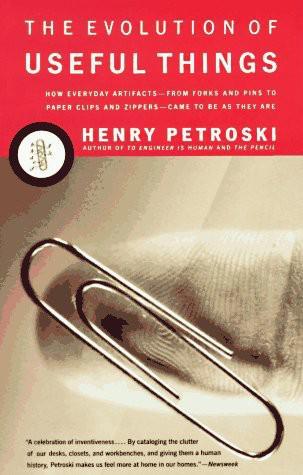
The Evolution of Useful Things
by
Henry Petroski
Published 2 Jan 1992
And the best of industrial designers will have the ability to see into the future of a product so that what might have been a damning shortcoming of an otherwise wonderful-looking and beautifully functioning artifact will be nipped in the bud. Considerations that go variously under the name “human-factors engineering” or, especially in England, “ergonomics” are closely related to those of industrial design, but the human-factors engineer is especially concerned with how anything from the simplest kitchen gadget to the most advanced technological system will behave at the hands of its intended, and perhaps unintended, users. The childproof bottle for prescription medicine is something that many people, especially older folks with arthritis, would agree could benefit from some industrial redesign, but most would also no doubt concur that the focus should be on the human-engineering aspects of getting the top off before the container gets an aesthetic treatment, although that would also be welcome.
…
Though the objective of how the end product will be used is never far from consciousness, those who are involved throughout the design process necessarily become so familiar and friendly with the object of their conception that they can operate it with an ease and care that the uninitiated may never know. An act as seemingly simple as attaching a new-style paper clip to a pile of papers will always be easier for the clip’s designer than for the first-time user. Even if a special effort is made to give a new product over to a human-factors engineer, whose task it is to suggest modifications to make the product user-friendly, the result will only be as successful as the process is complete in anticipating how the product will fail to function. If the engineers tacitly assume that all users will be right-handed, for example, the product may have no chance of being user-friendly for 10 percent of the population.
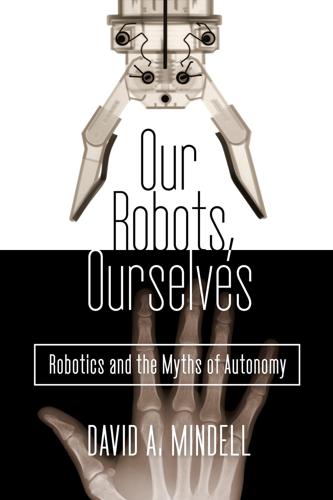
Our Robots, Ourselves: Robotics and the Myths of Autonomy
by
David A. Mindell
Published 12 Oct 2015
Skinner as well as a mechanical engineer, and had long been interested in human interactions with machinery (Skinner’s “black box” approach to behavior had always been appealing to engineers). The investigation into the 1979 nuclear accident at Three Mile Island had called on Sheridan’s skills, and helped shape the nascent field of human-factors engineering. Sheridan (who later became one of my thesis advisers at MIT) had been studying the interaction between humans and machines in real systems, and he realized that very few systems were truly manual, where the human controls everything by hand, or truly automatic, where the computer does everything.
…
Similarly, the Office of Naval Research, one of the oldest and best-respected federal sponsors of research, has a program in the “science of autonomy.” The program includes rigorous mathematical modeling disciplines, like optimization and game theory, control theory, and graph theory. But it also includes human-in-the-loop controls, economics, cognitive psychology, and human-factors engineering. One day soon such sponsors may explore in even greater depth the social dimensions of human behavior, cultural relationships, and knowledge creation. • • • We have told stories of three kinds of machines: human operated, like the airliners we fly every day, remotely operated, like the ROVs that explored the Titanic and mapped ancient shipwrecks, and autonomous, like the undersea vehicle ABE or the Mars rovers, which connect to people less directly and make some decisions on their own.

The Glass Cage: Automation and Us
by
Nicholas Carr
Published 28 Sep 2014
Their focus may have been the battlefield and the factory, but their aspiration was deeply humanistic: to bring people and technology together in a productive, resilient, and safe symbiosis, a harmonious human-machine partnership that would get the best from both sides. If ours is an age of complex systems, then ergonomists are our metaphysicians. At least they should be. All too often, discoveries and insights from the field of ergonomics, or, as it’s now commonly known, human-factors engineering, are ignored or given short shrift. Concerns about the effects of computers and other machines on people’s minds and bodies have routinely been trumped by the desire to achieve maximum efficiency, speed, and precision—or simply to turn as big a profit as possible. Software programmers receive little or no training in ergonomics, and they remain largely oblivious to relevant human-factors research.
…
., 197–98 cloud computing, 195, 202, 209 cognition, cognitive skills, 11–12, 56–58, 71–74, 81, 120, 121, 148–51, 165 of doctors, 105 embodied, 149–51, 213 cognitive map, 129–30, 135 cognitive psychologists, 72–76, 81, 129–30 Colgan Air, 45 communication, 36, 163, 198 doctor-patient, 103–6 Communist Manifesto (Marx and Engels), 225 computer-aided design (CAD), 138–42, 144, 145, 167, 219, 229–30 computer games, 75, 177–80, 219 computer programmers, 161, 162, 168 computers, 1, 2, 17, 33, 37, 38, 40, 159 architecture and design and, 138–47 automation and, 36, 43, 50–58, 62, 66–67, 69, 90, 91, 202–3 aviation and, 43, 46, 50–52, 54, 55, 57, 62, 153, 168, 170, 172–73 avocations and, 12 benefits of transferring work to, 17–18 boundary between humans and, 10–12 brain compared with, 119, 151 capabilities of, 8–9 in cars, 7, 8–9 costs of transferring work to, 18, 28, 30, 66–67 dependency on, 12–13 effects on workload of, 90, 91 ergonomics and, 164–68 expectation of aid of, 193–95 health care and, 93–106 human compared with, 153 as media devices, 219 memory experiment and, 79 mental processes and, 74 monitoring of, 17 oracle machine, 119–20 satellite-linked, 125–37 speed of, 118–22, 139, 156, 164, 173, 219 vocations and, 12 wearable, 12, 201 white-collar, 93–106 computer scientists, 156 computer simulation models, 93, 97 concentration, 200 Concours de la Sécurité en Aéroplane, 46 consciousness, 83, 119n, 121, 148–49, 150, 187 Continental Connection, 43–45, 54, 154 corporate auditors, 115 Cowen, Tyler, 31 craft workers, 23, 106, 109 Crawford, Kate, 122–23 Crawford, Matthew, 147–48 creativity, 10, 12, 14, 143, 144, 167, 206, 229 Cross, Nigel, 143–44 Csikszentmihalyi, Mihalyi, 14–16, 18, 85, 228–29 Cukier, Kenneth, 122 culture, 124, 131, 196, 198, 217, 220, 226 Curtiss C-2 biplane, 46–47 cutting grass, 215–16 Cybernetics, or Control and Communication in the Animal and the Machine (Wiener), 38–39 cyborgs, 2 dancing mice, 87–92 Dancing Mouse, The (Yerkes), 85–86 DARPA (Department of Defense laboratory), 165 Dassault, 140 data, 113, 114, 117, 119–22, 136, 167, 248n data fundamentalism, 122–23 data processing, 17, 195 decision aids, automated, 113–15, 166 drawbacks to, 77 decision making, 160, 166, 168 decision trees, 113–14 declarative knowledge, 9, 10–11, 83 Deep Blue, 12 degeneration effect, 65–85 automation complacency and bias and, 67–72 Whitehead’s views and, 65–67 dementia, 135–37 dependency, 130, 133, 136, 146, 203, 225 depression, 220 Descartes, René, 148, 216 design, designers, 137–47 computer-aided (CAD), 138–42, 144, 145, 167, 219, 229–30 human- vs. technology-centered automation and, 158–62, 164–65, 167–70, 172 parametric, 140–41 system, 155–57 video games as model for, 178–82 Designerly Ways of Knowing (Cross), 143–44 desire, 15, 17, 20, 83, 161, 206–7, 210 to understand the world, 123–24 deskilling, 55, 100, 106–12, 115 Dewey, John, 148, 149, 220 diabetes, 245n–46n diagnostic testing, 70–71, 99, 102 DiFazio, William, 27–28 Digital Apollo (Mindell), 60, 61 disease, 70–71, 113, 135–37, 245n–46n dislocation, 133 Do, Ellen Yi-Luen, 167 Doctor Algorithm, 154, 155 doctors, 12, 32, 70, 93–106, 114–15, 120, 123, 147, 155, 166, 173, 219 evidence-based medicine (EBM) and, 114, 123 patient’s relationship with, 103–6 primary-care, 100–104, 154 document discovery, 116 Dodson, John Dillingham, 88–89 Dorsey, Jack, 203 Dorsey, Julie, 167–68 Dostrovsky, Jonathan, 133 dot-com bubble, 117, 194, 195 drawing and sketching, 142–47 Dreyfus, Hubert, 82 driving, see cars and driving drone strikes, 188 drugs, prescription, 220–21 Drum, Kevin, 225 Dyer-Witheford, Nick, 24 Dyson, Freeman, 175 Dyson, George, 20, 113 Eagle, Alan, 176 Ebbatson, Matthew, 55–56, 58 ebook, 29 economic growth, 22, 27, 30 economic stability, 20 Economist, 225 economists, 9, 18, 22, 29, 30, 32–33, 109 economy, economics, 20, 25–33, 117 e-discovery, 116 education, 113, 120, 153 efficiency, 8, 17, 26, 58, 61, 114, 132, 139, 159, 173, 174, 176, 219 EMR and, 101, 102 factories and, 106–8 electric grid, 195–96 electronic medical records (EMR), 93–106, 114, 123, 245n–46n embodied cognition, 149–51, 213 Emerson, Ralph Waldo, 16, 232 End of Work, The (Rifkin), 28 engagement, 14, 165 Engels, Friedrich, 225 Engineering a Safer World (Leveson), 155–56 engineers, 34, 36–37, 46, 49, 50, 54, 59, 69, 119, 120, 139, 157–60, 162, 164, 168, 174, 175, 194, 196 Enlightenment, 159–60 entorhinal cortex, 134, 135 equilibrium, of aircraft, 61–62 ergonomics (human-factors engineering), 54, 158–60, 164–68 Ericsson, K. Anders, 84 essay-grading algorithms, 206 ethical choices, 18, 61, 183–93, 221–22 killer robots and, 187–93, 204 self-driving cars and, 183–87, 193, 204 top-down vs. bottom-up approach to, 189–91 Ethics and Emergency Science Group, 189 European Aviation Safety Agency, 58 evidence-based medicine (EBM), 114, 123 evolution, 137 experience, 1, 23, 121, 123, 124, 150, 190, 218, 219, 226 Experience Music Project, 140 “experience sampling” study, 14–15, 18 expert systems, 76–77 explicit knowledge, 9, 10–11, 83 eyeglasses, computerized, 199–202 eyes, 143, 148, 201, 216, 223 retina, 149–50 Facebook, 181–82, 201, 203, 205–6 factories, 22–26, 28, 106–8, 112, 118, 159, 174, 195, 222 Farrell, Simon, 74 Federal Aviation Administration (FAA), 1, 55, 170 feedback, 36–37, 84, 85, 105, 114, 160, 165, 169 negative, 71–72 from video games, 178–79 finance, 115–16, 120, 170–71, 173 financial meltdown (2008), 77 Fitts, Paul, 158 Flight, 50, 59 flight automation, 1, 49–63 flight crews, 59 flight engineers, 59 flight simulators, 56, 200–201 flow, 84–85, 96, 179, 213 Flow (Csikszentmihalyi), 14–15 fly-by-wire controls, 51–52, 55, 154, 168 Forces of Production (Noble), 173–74 Ford Motor Company, 34, 35, 38, 39 Ford Pinto, 5 France, 36, 45, 46, 159, 171 Frankenstein, Julia, 129–30 Frankenstein monster, 26, 30 freedom, 17, 61, 207, 208, 226, 227, 228 freight shipment, 196–97 friction, 133, 181, 182 frictionlessness, 180, 220 frictionless sharing, 181–82 Frost, Robert, 211–16, 218, 221–22, 232 future, futurism, 226–28 Gallagher, Shaun, 150 gamification, 179n Gates, Bill, 197 Gawande, Atul, 104 GE, 31, 175, 195 Gehry, Frank, 140 General Motors, 27 generation effect, 72–80, 84–85, 165 genetic traits, 82–83 Gensler, 167 German Ideology, The (Marx), 235n Giedion, Sigfried, 237n Gilbert, Daniel, 15 glass cockpits, 50, 55, 59, 168, 169 Goldberger, Paul, 141 Google, 6–8, 13, 78–80, 118, 176, 181, 182, 195 cars, 6–8, 10, 12, 13, 153, 154–55, 183, 207, 208 Google Glass, 136–37, 199–201, 203, 208 Google Maps, 132, 136, 204–5 Google Now, 199 Google Suggest, 181, 200 Google Ventures, 116 Gorman, James, 134 GPS, 52, 68–70, 126–37, 144 “GPS and the End of the Road” (Schulman), 133 Graves, Michael, 143, 145 Gray, J.
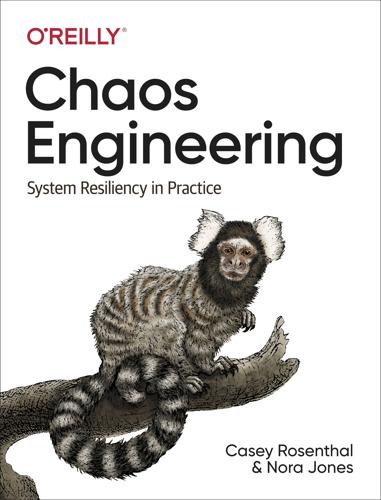
Chaos Engineering: System Resiliency in Practice
by
Casey Rosenthal
and
Nora Jones
Published 27 Apr 2020
running experiments in production, Run Experiments in Production varying real-world events, Vary Real-World Events future of, The Future of “The Principles” origins of, Formalizing the Discipline Privacy Rights Clearinghouse, The Case for Security Chaos Engineering probe effect, Probe Effect-Addressing the Probe Effect Prometheus, Detecting Failures Purple Teaming, Security Chaos Engineering and Current Methods Q questions and comments, How to Contact Us R Raft consensus algorithm, A Real-World Example Rasmussen, Jens, Dynamic Safety Model, Failure and Success, Two Sides of the Same Coin reactive testing, Where CV Comes From Red Teaming, Security Chaos Engineering and Current Methods Redliner capacity tool, Using LiX to Target Experiments regional failover process, Going Big relationshipsapplied to software, Economic Pillars of Complexity Applied to Software in Economic Pillars of Complexity model, Relationships release and rollback procedures, Release and rollback replication latency, Data integrity resilienceChaos Engineering and, Chaos Engineering and Resilience developing, Creating Foresight engineering adaptive capacity, Engineering Adaptive Capacity improving, Human Factors improving in general industry, Key Principles of HOP role of humans in, Conclusion Resilience Engineering, Dynamic Safety Model retry policies, Impossibility Result return on investment (ROI)challenges of, Ephemeral Nature of Incident Reduction Chaos Automation Platform (ChAP), Alternative ROI Example collateral ROI, Collateral ROI Kirkpatrick Model, Kirkpatrick Model-Level 4: Results reversibilityapplied to software, Economic Pillars of Complexity Applied to Software in Economic Pillars of Complexity model, Reversibility feedback loop promoting, Where CV Comes From release and rollback procedures, Release and rollback Rinehart, Aaron, Evolution, The Case for Security Chaos Engineering-The Case for Security Chaos Engineering risk management, Conclusion rollbacks, Release and rollback root cause analysis (RCA), Human Factors and Failure, Conclusion Rosen, Logan, Principles in Action, LinkedIn Being Mindful of Members-Conclusion S safe-listing mechanisms, Scope of Tests at Google Schrodingerbenefits of, Conclusion future features of, Conclusion overview of, Automated Experimentation Platform: Schrodinger workflow, Schrodinger Workflow scopealigning mental models of, Discuss Scope of tests at Google, Scope of Tests at Google-Scope of Tests at Google second-system effect, Accidental Complexity securityapplying Chaos Engineering to, Evolution (see also Security Chaos Engineering (SCE)) challenges of distributed systems, The Case for Security Chaos Engineering, Feedback Loops feedback loops needed for, Feedback Loops increasing issues regarding, The Case for Security Chaos Engineering modern approach to, A Modern Approach to Security-Feedback Loops Red and Purple Teaming, Security Chaos Engineering and Current Methods security emergencies, Medical and security emergencies Security Chaos Engineering (SCE)benefits of, The Case for Security Chaos Engineering, Benefits of Security Chaos Engineering ChaoSlingr framework, Example Security Chaos Engineering Tool: ChaoSlingr-The Story of ChaoSlingr goal of, The Case for Security Chaos Engineering, Benefits of Security Chaos Engineering security Game Days, Security Game Days service-level objective (SLO)artificial limitations on, Scope of Tests at Google Borg SRE and, Scope of Tests at Google impact of disaster testing on, DiRT tests must have no service-level objective breaking impact on external systems or users verifying, Run at service levels Shafer, Andrew Clay, Safely Organizing the Chaos Site Reliability Engineering (SRE), Breaking Stuff, Google DiRT: Disaster Recovery Testing, Incident management procedures, Feedback Loops Slackapproach to Chaos Engineering at, Principles in Action, Slack’s Disasterpiece Theater basic fault tolerance, Getting to Basic Fault Tolerance design patterns in older versus newer systems, Design Patterns Common in Older Systems-Design Patterns Common in Newer Systems Disasterpiece Theater programchecklists, Preparation, The Exercise debriefing, Debriefing evolution of, How the Process Has Evolved exercise initiation, The Exercise getting management buy-in, Getting Management Buy-In goals and anti-goals, Goals lessons learned, Results-Impossibility Result note taking, The Exercise preparation, Preparation snapshot consistency, A Real-World Example sociotechnical systemsapplying Chaos Engineering tobuilding hypotheses around steady-state behavior, Build a Hypothesis core principles, Putting the Principles into Practice minimizing disruption due to, Minimize the Blast Radius potential of, Humanistic Chaos varying real-world events, Vary Real-World Events defined, Human Factors engineering adaptive capacity, Engineering Adaptive Capacity inherent failures within, Remove the Low-Hanging Fruit organizational states, Safely Organizing the Chaos systems within systems in organizations, Organizations Are a System of Systems technical solutions for human problems, Putting the “Socio” in Sociotechnical Systems soft dependencies, The role of the expert software correctness, continuous verification for, Correctness sophistication levelsautomation of platforms, Automation of the platforms experimentation platforms, Experimentation platforms fault injection consultation, Fault injection consultation fault injection self-service tools, Fault injection self-service tools Game Days, Game Days progression of Chaos Engineering, Sophistication SportsEngineboundary between performance and failure, Failure and Success, Two Sides of the Same Coin case studieschanging basic assumptions, Case Study 3: Changing a Basic Assumption-The outcome Game Days, Case Study 1: Gaming Your Game Days-Pave new pathways to communication increasing connections, Case Study 2: Connecting the Dots-Using signals to set a direction readiness for experimentation, Safely Organizing the Chaos staff members, availability of, People outages, The hypothesis stateapplied to software, Economic Pillars of Complexity Applied to Software building hypotheses around steady-state behavior, Build a Hypothesis Around Steady-State Behavior, Hypothesize, Build a Hypothesis, The Advanced Principles in ChAP in Economic Pillars of Complexity model, State substitution myth, The Substitution Myth Surmachev, Oleg, Principles in Action, Microsoft Variation and Prioritization of Experiments-Conclusion system glitches, Human Factors and Failure, Remove the Low-Hanging Fruit, Conclusion systemic perspective, The Systemic Perspective systems thinkingbullwhip effect, Contemplating Complexity feedback loops, Close the Loops T Taleb, Nassim, Antifragility Tang, Liu, Evolution, Why Do We Need Chaos Engineering?

Through the Glass Ceiling to the Stars: The Story of the First American Woman to Command a Space Mission
by
Eileen M. Collins
and
Jonathan H. Ward
Published 13 Sep 2021
We relied on paper maps and “approach plates” (maps with procedures for making an instrument approach to an airfield). GPS hadn’t been invented yet, and back in the old days, pilots had to shuffle papers scattered all over the cockpit, while holding altitude, steering in the right direction, and talking on the radio. Nowadays, an electronic screen displays everything for the pilot, and human factors engineering—improving the layout of the cockpit and reducing the potential for distracting or confusing information—has made flying much safer and more efficient. Toward the end of our yearlong training, the student pilots began anxiously awaiting their operational flight assignments. The instructors had been meeting over the months to review each student’s capabilities.
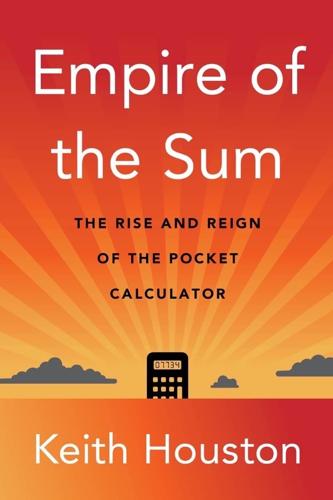
Empire of the Sum: The Rise and Reign of the Pocket Calculator
by
Keith Houston
Published 22 Aug 2023
Okon, “The First Handheld Digital Calculator Celebrates 50 Years, Part 1,” Electronic Design, March 27, 2017, https://www.electronicdesign.com/technologies/analog/article/21804824/the-first-handheld-digital-calculator-celebrates-50-years-part-1. 34 Cade Metz, “Jerry Merryman, Co-Inventor of the Pocket Calculator, Dies at 86,” New York Times, March 7, 2017, https://www.nytimes.com/2019/03/07/obituaries/jerry-merryman-dead.html. 35 Okon, “First Handheld Digital Calculator, Part 1.” 36 Metz, “Jerry Merryman.” 37 Rick Bensene, “Canon Pocketronic Electronic Calculator,” The Old Calculator Web Museum, January 9, 2011, https://www.oldcalculatormuseum.com/pocketronic.html. 38 Bensene, “Canon Pocketronic.” 39 Okon, “First Handheld Digital Calculator, Part 1.” 40 Hamrick, “Hand-Held Electronic Calculator,” 634. 41 Bensene, “Canon Pocketronic.” 42 “Adding Machines - Ten Keys & Fewer.” 43 R. L. Deininger, “Human Factors Engineering Studies of the Design and Use of Pushbutton Telephone Sets,” Bell System Technical Journal 39, no. 4 (July 29, 1960): 995–1012, https://doi.org/10.1002/j.1538-7305.1960.tb04447.x. 44 Hamrick, “Hand-Held Electronic Calculator,” 634; Thomas M. Okon and James R. Biard, “The First Practical LED,” Edison Tech Center 9 (2015). 45 Bensene, “Canon Pocketronic”; Thomas M.
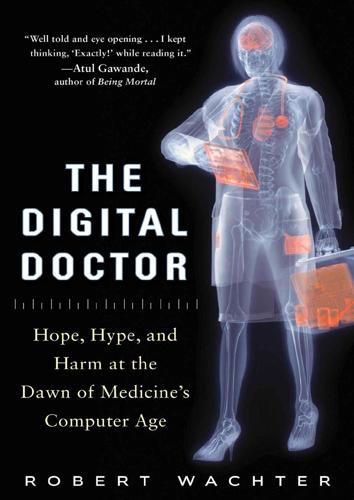
The Digital Doctor: Hope, Hype, and Harm at the Dawn of Medicine’s Computer Age
by
Robert Wachter
Published 7 Apr 2015
Today’s computers, with all their humanlike characteristics such as speech and the ability to answer questions or to anticipate our needs (think about how Google finishes your thoughts while you’re typing in a search query), engender even more trust, sometimes beyond what they deserve. An increasing focus of human factors engineers and psychologists has been on how to build machines that are transparent about how trustworthy their results are. In defeating the Jeopardy champions, Watson signaled its degree of certainty with its answers. George Mason University psychologist Raja Parasuraman is working on a type of computer Trusto-Meter, in which the machine might have a green, yellow, or red light, depending on how trustworthy it thinks its result is.

Tools for Thought: The History and Future of Mind-Expanding Technology
by
Howard Rheingold
Published 14 May 2000
The way the machine was operated by people would have to change, and the machine itself would have to become much faster and more powerful. Although he was still a novice in digital computer design, Licklider was familiar with vacuum tube circuitry and enough of an expert in the hybrid discipline of "human factors engineering" to recognize that the mechanical assistant he wanted would need capabilities that would be possible only with the ultrafast computers he foresaw in the near future. When he began applying the methods he had been using in human factors research to the informational and communication activities of technical thinkers like himself, Licklider found himself drawn to the idea of a kind of computation that was more dynamic, more of a dialogue , more of an aid in formulating as well as plotting models.
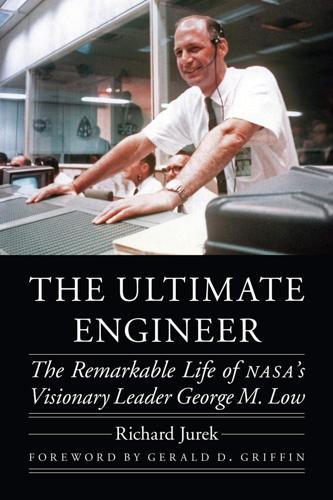
The Ultimate Engineer: The Remarkable Life of NASA's Visionary Leader George M. Low
by
Richard Jurek
Published 2 Dec 2019
He firmly believed that the human element—the astronaut—was destined to play a vital and direct role in the future pioneering flights. Humans, Low told the assembled crowd of science and aviation journalists, “are the most versatile scientific instruments yet devised.” In the ensuing years, he would work very hard to ensure proper integration of human-factors engineering. He also was an early supporter of NASA’s own space medical research in areas such as radiation exposure and the physical stresses of spaceflight. In fact, he believed that the biosciences—physiology and biology—would eventually become more important than actual technical aeronautical engineering.
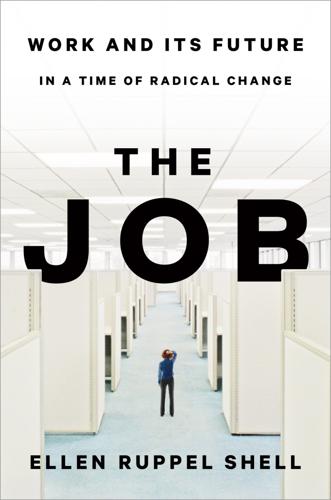
The Job: The Future of Work in the Modern Era
by
Ellen Ruppel Shell
Published 22 Oct 2018
Even the seemingly innocuous open office Survey by CoreNet Global, a professional association for corporate real estate managers. See, for example, Joshua Rivera, “Death to the Open Office Floor Plan!,” Fast Company, January 10, 2014, www.fastcompany.com/3024697/death-to-the-open-offices-floorplan. “a web of control that did not exist” Thanks to Charles Mauro, an expert in human factors engineering who helped me understand the link between office design and productivity (or the lack thereof). Mauro told me that while it has become received wisdom that an open office plan leads to greater collegiality and productivity, “there is not a single scrap of evidence” to support that claim.

Inventors at Work: The Minds and Motivation Behind Modern Inventions
by
Brett Stern
Published 14 Oct 2012
Croley: The practice of industrial design is to synthesize marketing, engineering, and customer research into product visions to solve our customers’ needs in a unique way never seen before. Then those design visions get translated to the engineers for additional technology development and detailing. Our Innovation and Design group is an umbrella for four disciplines: customer research, industrial design, human factors engineering, and user interaction and experience design. This allows us to mix it up across all four disciplines very quickly to come up with what we feel are the right solutions for the company. Now in the context of that, Graham take it away from a customer research perspective. Marshall: From a customer research perspective, we want to innovate around our customers’ business processes rather than around our product or device.
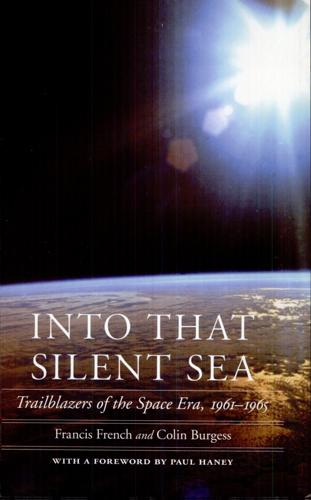
Into That Silent Sea: Trailblazers of the Space Era, 1961-1965
by
Francis O. French
,
Colin Burgess
and
Paul Haney
Published 2 Jan 2007
There is a tragic irony in the fact that Lewis saw one spacecraft lost to a hatch that opened too quickly and a second to a hatch that did not open fast enough. Lewis's role in the space program continued after his work on the Apollo hatch. He returned to graduate school for a second time and earned his doctorate in human factors engineering in 1979, then managed the development and integration of crew-to-spacecraft interface requirements as the head of Nasa's Crew Station Design Section. In this capacity he generated the first crew station design specifications. In this period, he also founded three of the Flight Crew Support Division's major facilities and the majority of the division's research programs.
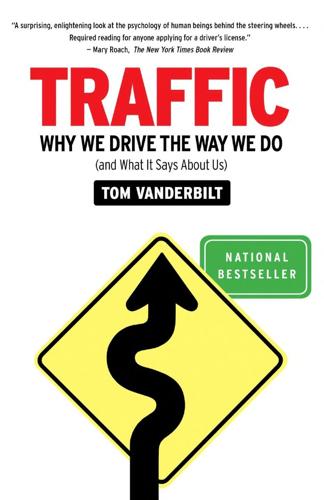
Traffic: Why We Drive the Way We Do (And What It Says About Us)
by
Tom Vanderbilt
Published 28 Jul 2008
Staplin, “Simulator and Field Measure of Driver Age Differences in Left-Turn Gap Judgments,” Transportation Research Board Record, no. 1485, Transportation Research Board, National Research Council, 1995. to actually see: R. E. Eberts and A. G. MacMillan, “Misperception of Small Cars,” in Trends in Ergonomics/Human Factors, vol 2, ed. R. E. Ebert and C. G. Eberts (North Holland: Elsevier Science Publishers, 1985). slower the object seems: H. W. Leibowitz, “Grade Crossing Accidents and Human Factors Engineering,” American Scientist, vol. 73, no. 6 (November–December 1985), pp. 558–62. Leibowitz also noted another potential reason—the “deceptive geometry of collisions”—for overestimating the distance of an approaching train, similar to the problem mentioned with drivers trying to judge the distance of an approaching car.

The Organized Mind: Thinking Straight in the Age of Information Overload
by
Daniel J. Levitin
Published 18 Aug 2014
The systematic organization also makes it easy to notice misfiled items. The fundamental principle of externalizing information applies universally. Airline pilots formerly had two controls that looked strikingly similar but performed different functions for the flaps and the landing gear. After a series of accidents, human-factors engineers came up with the idea of externalizing the information about the actions of those controls: The flap control was made to look like a miniature flap, and the landing gear control was made into a round wheel, resembling the landing gear. Rather than the pilots having to rely on their memories of which control was where, the control itself reminded them of what it was for, and pilots made fewer errors as a result.